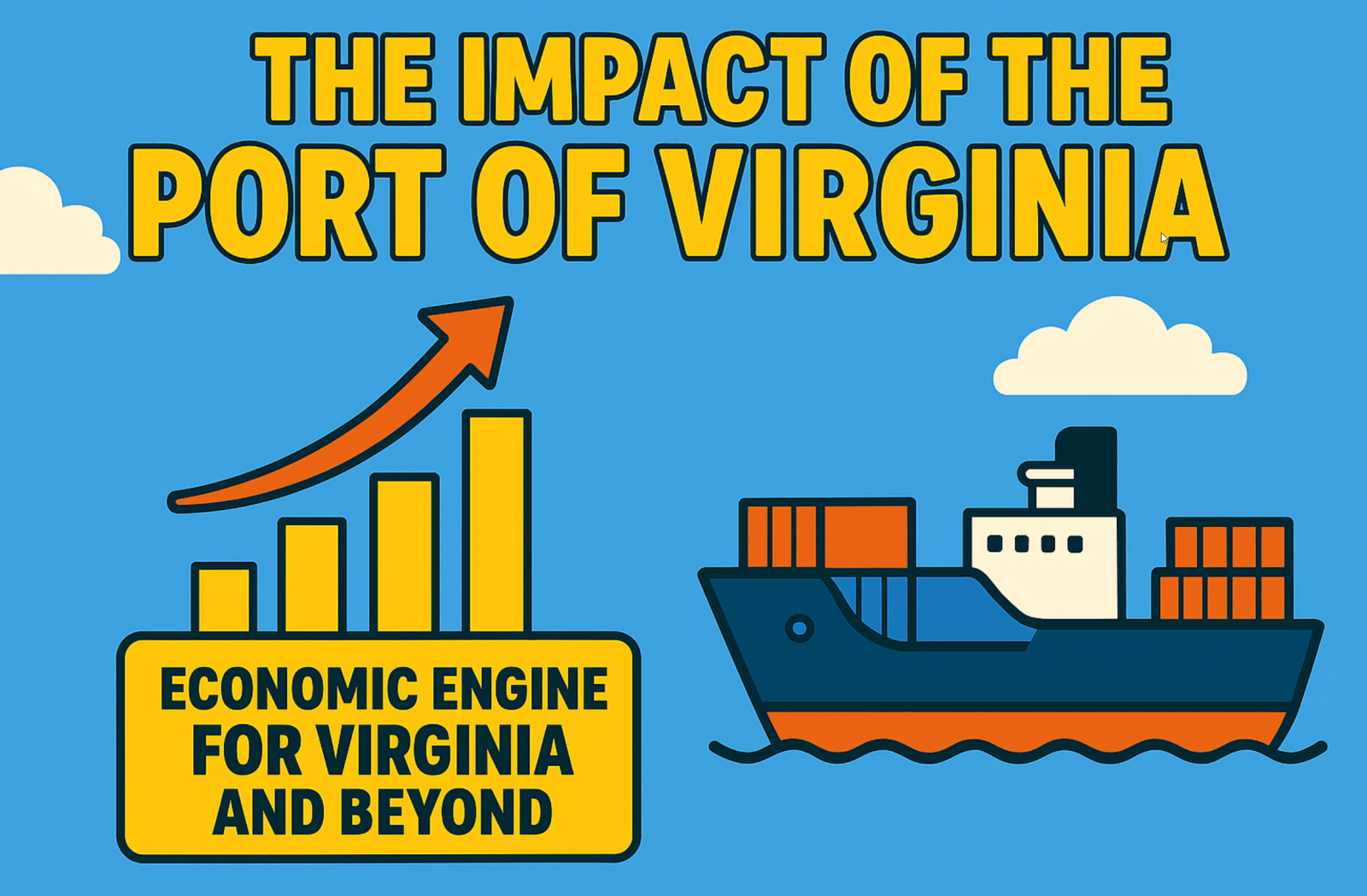The Impact of the Port of Virginia
The Impact of the Port of Virginia

The Port of Virginia stands as a critical driver of economic growth and innovation, with influence that extends well beyond the Commonwealth. From job creation and global cargo handling to leadership in environmental stewardship, the Port continues to distinguish itself as one of the nation’s premier gateways to world commerce.
Economic Engine for Virginia and Beyond
The Port of Virginia delivers measurable economic benefits across the state, generating 570,000 jobs and billions of dollars in wages annually across Virginia. The Port has become a powerful catalyst for business investment. Major companies such as LEGO, which recently established a facility in Richmond, and LiDL, which relies on the Port as a central link in its U.S. supply chain, have chosen Virginia in large part due to the Port’s efficiency and connectivity.
“From a state perspective the Port of Virginia is a significant economic engine,” said Joe Harris, spokesman for the Port of Virginia.
Additionally, the Port of Virginia’s inland ports have attracted businesses into the state, with multiple business literally setting up on the Virginia Inland Port’s fence line to gain strategic access to the port’s rail line. The same phenomenon is happening in Richmond at Richmond Marine Terminal, an inland port that provides river access and barge service and is leased and run by Port of Virginia.
Commitment to Sustainability
In addition to its economic contributions, the Port of Virginia has established itself as a leader in sustainability. Initiatives that began more than a decade ago have grown into comprehensive programs designed to reduce emissions and support greener supply chains.
“We’ve always had an eye toward sustainability,” Harris said. “It started back in the 20-teens with small programs, just because we thought that was the right thing to do and we saw value in it.”
This year, the Port announced its RailGreen program, a partnership with Norfolk Southern designed to “reduce supply chain emissions for shippers.” The Port of Virginia also received a federal investment of $380 million toward the purchase of electric equipment to help the port achieve its goal of eliminating greenhouse gas emissions by 2040.
“That is the way the industry is moving and we’re also seeing a lot of our port users and our clients begin to change the way they’re doing business,” said Harris. “We want to be in lockstep with our peers, we want to be in lockstep with our customers, and we want to be in lockstep with port users that are all greening up their supply chains.”
Gateway Investment Project: Preparing for the Future
Looking ahead, the Port of Virginia is undertaking the $1.4 billion Gateway Investment Project, an initiative that will further enhance efficiency and capacity. The project includes the development of the East Coast’s deepest and widest shipping channel, enabling two-way vessel traffic and reducing delays for global carriers.
In addition, the Port has recently completed a central railyard expansion, increasing capacity to handle up to two million annual rail lifts – strengthening intermodal efficiency and positioning the Port to meet the growing demands of global trade.
With its balance of economic impact, environmental leadership, and forward-looking infrastructure investments, the Port of Virginia is poised to remain a cornerstone of U.S. commerce for decades to come.
